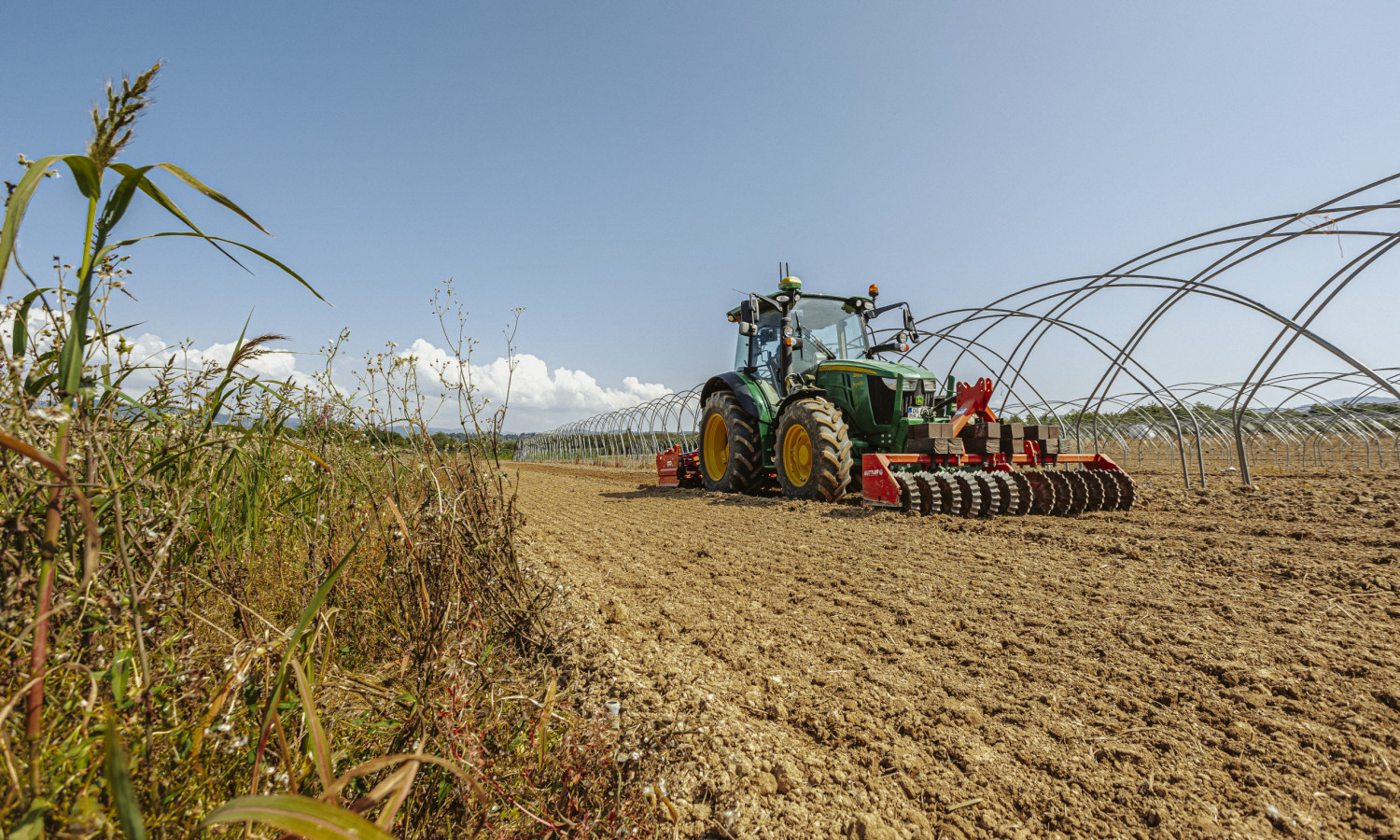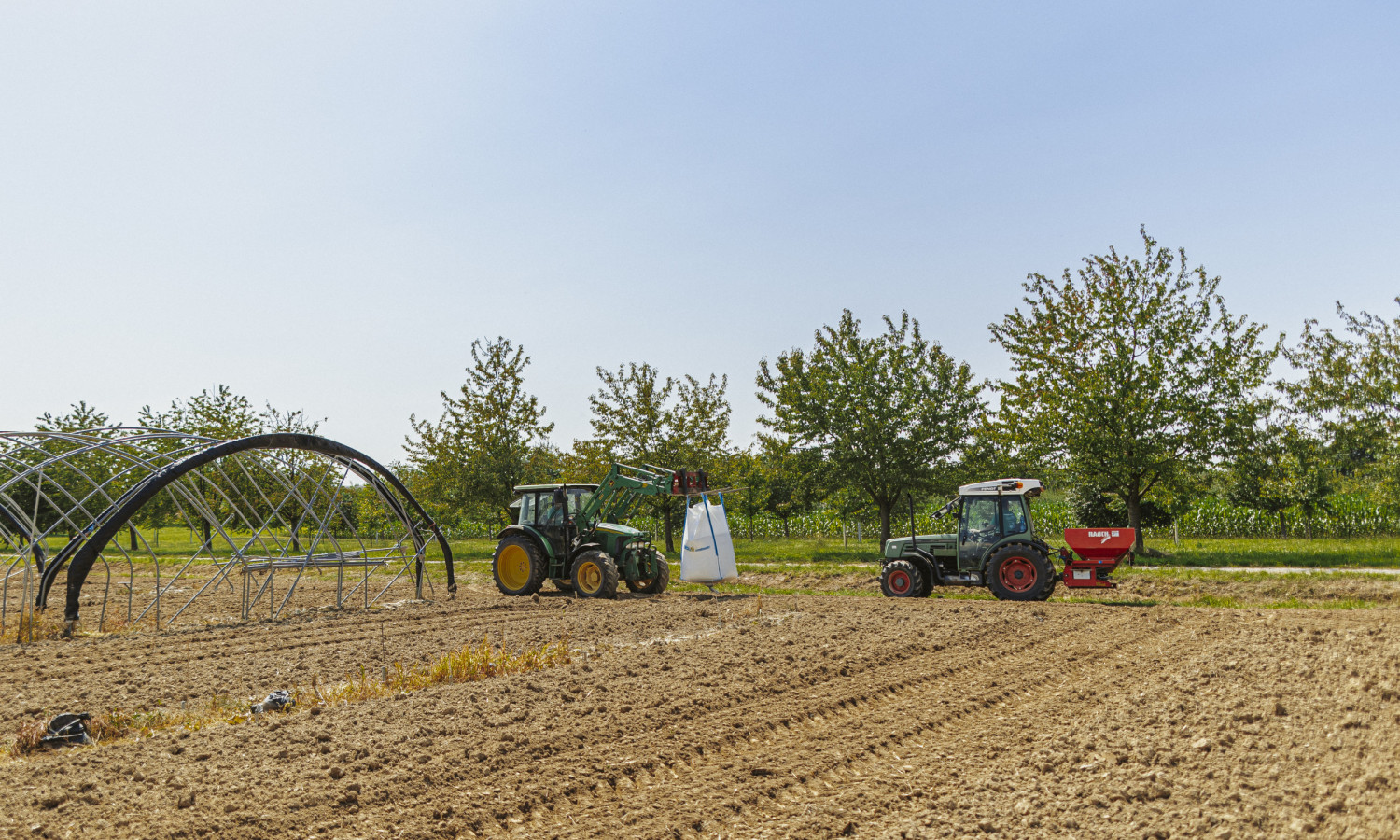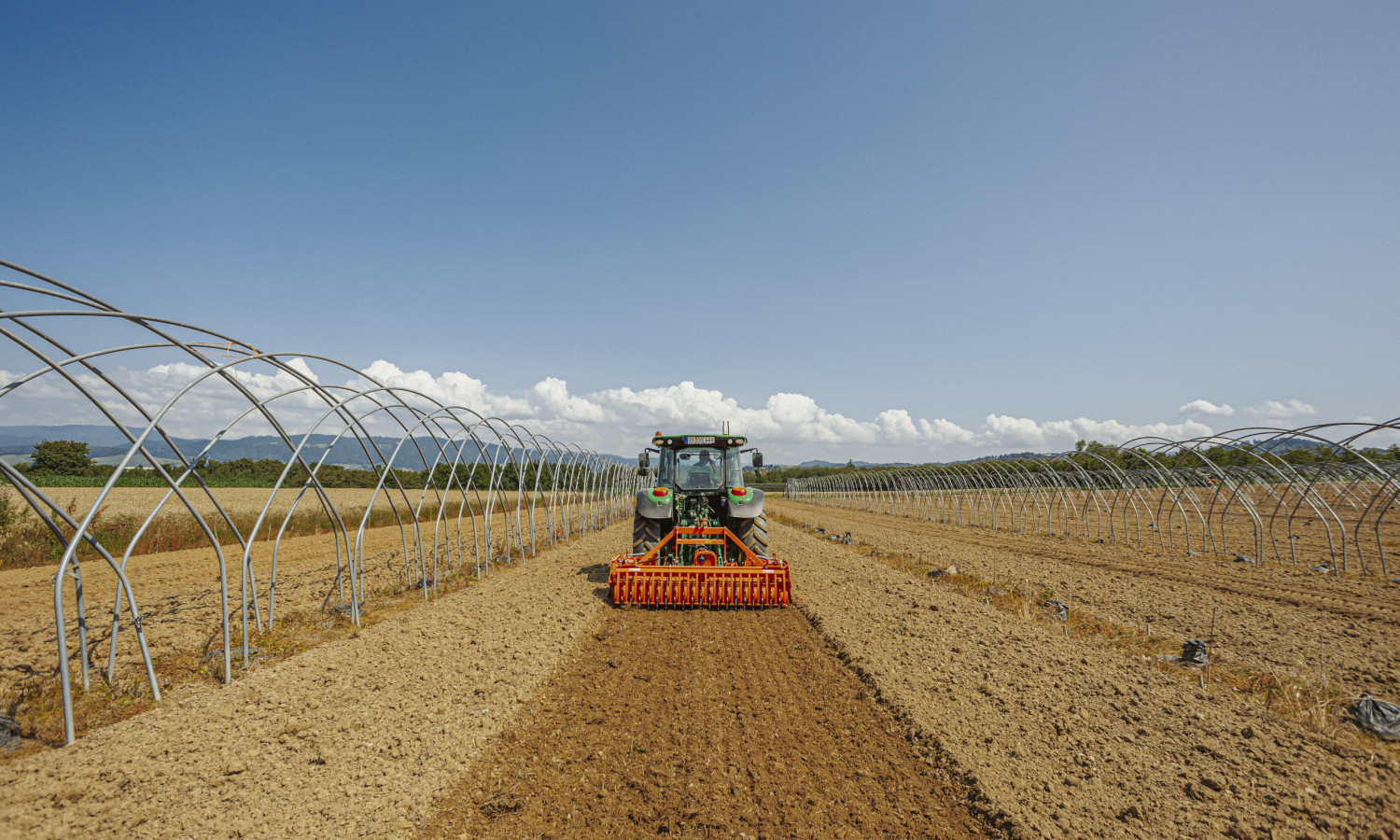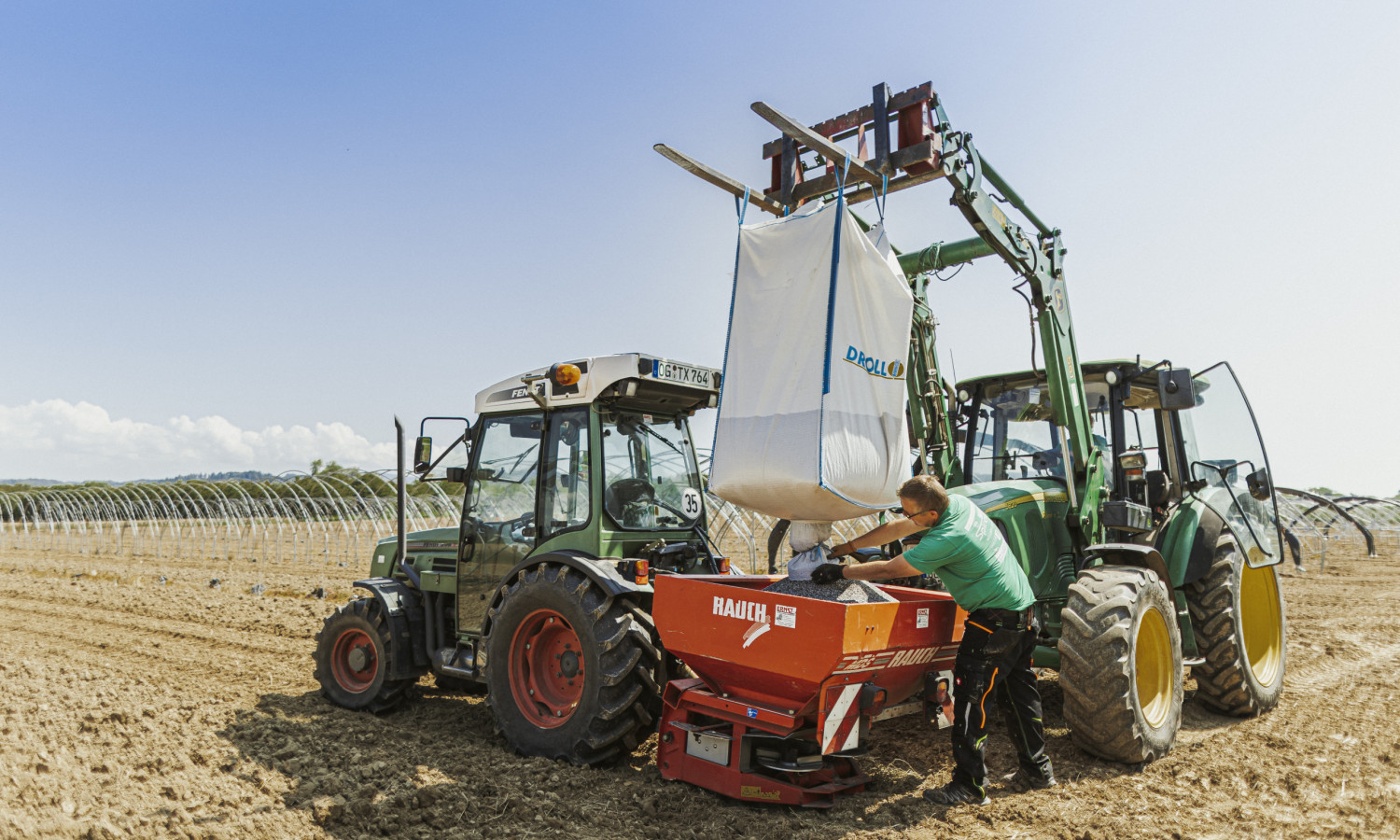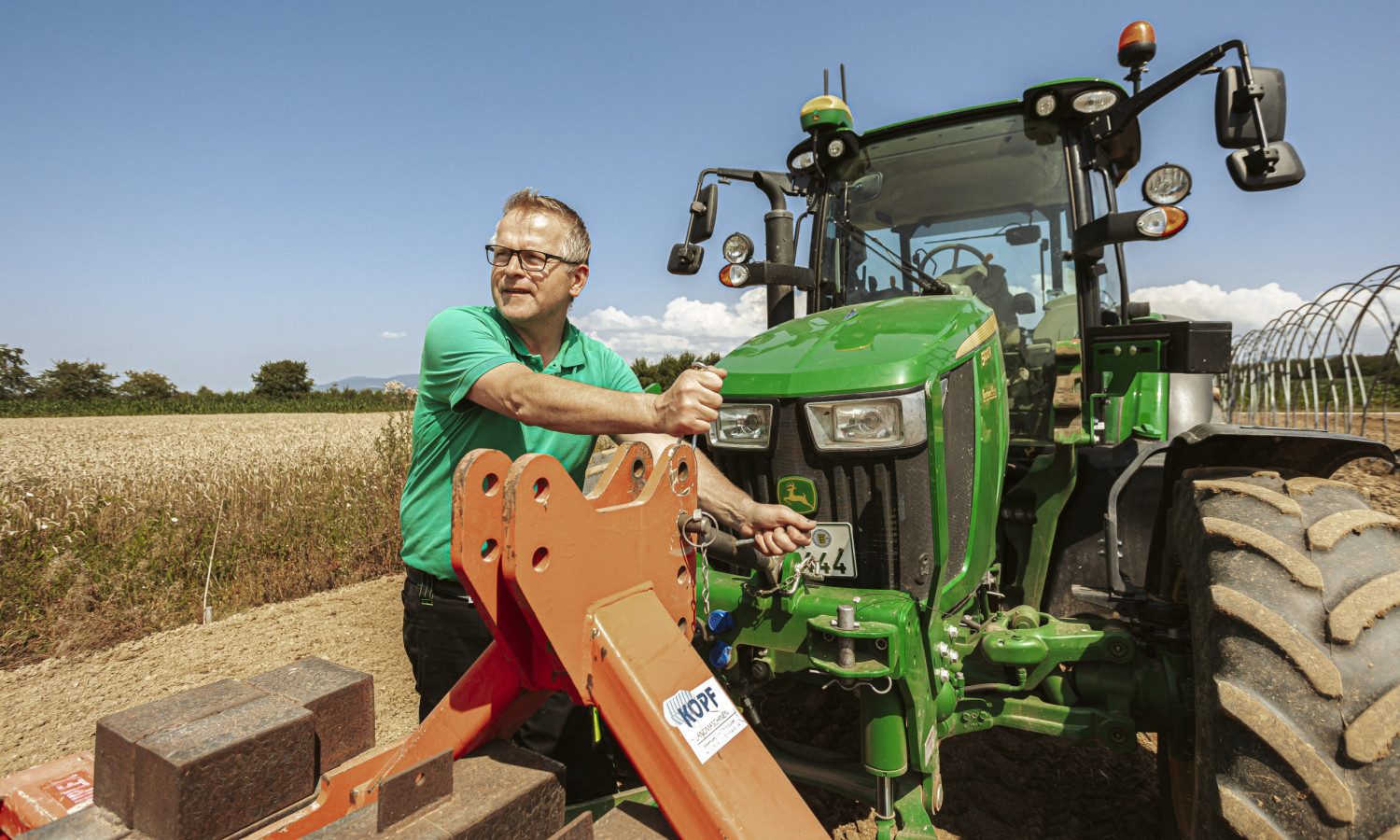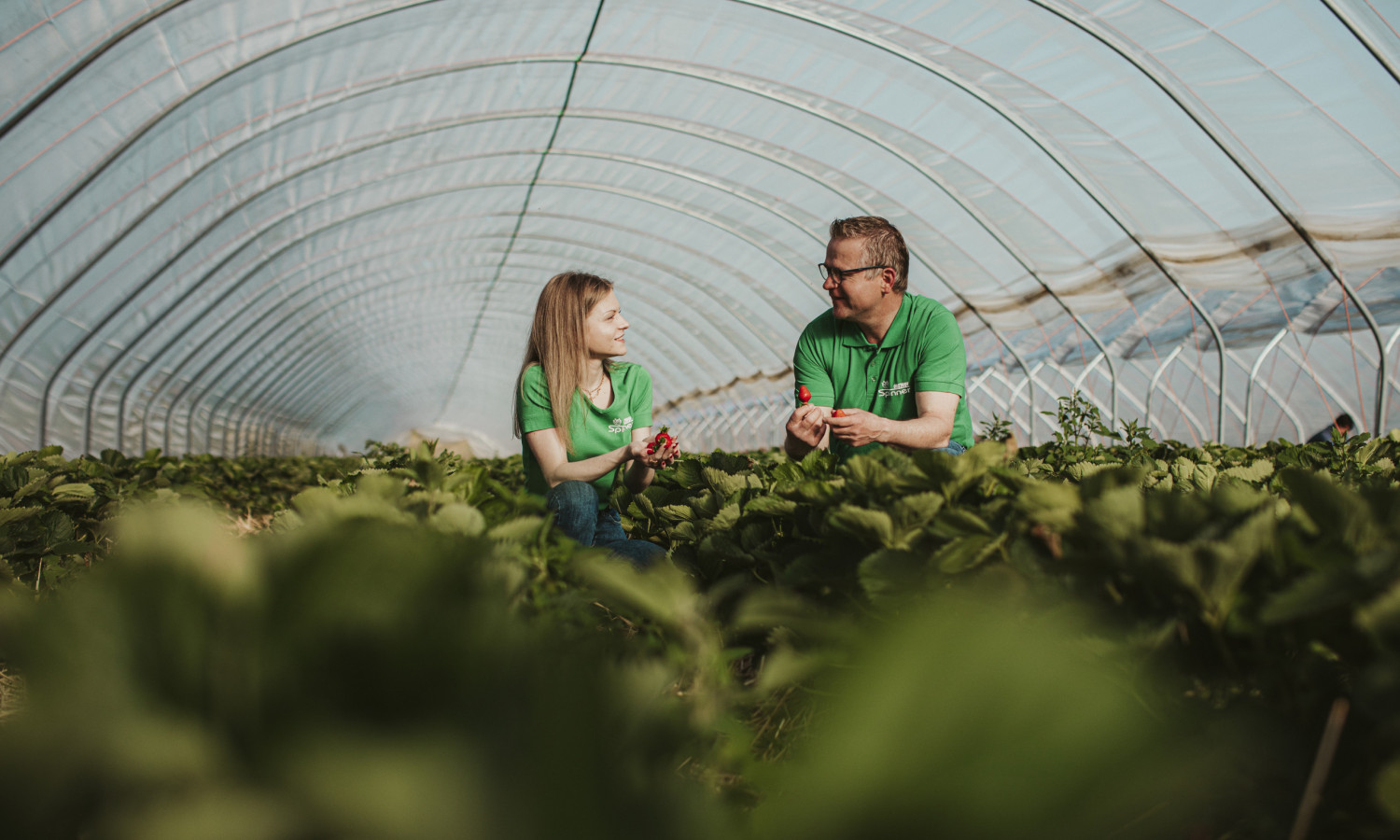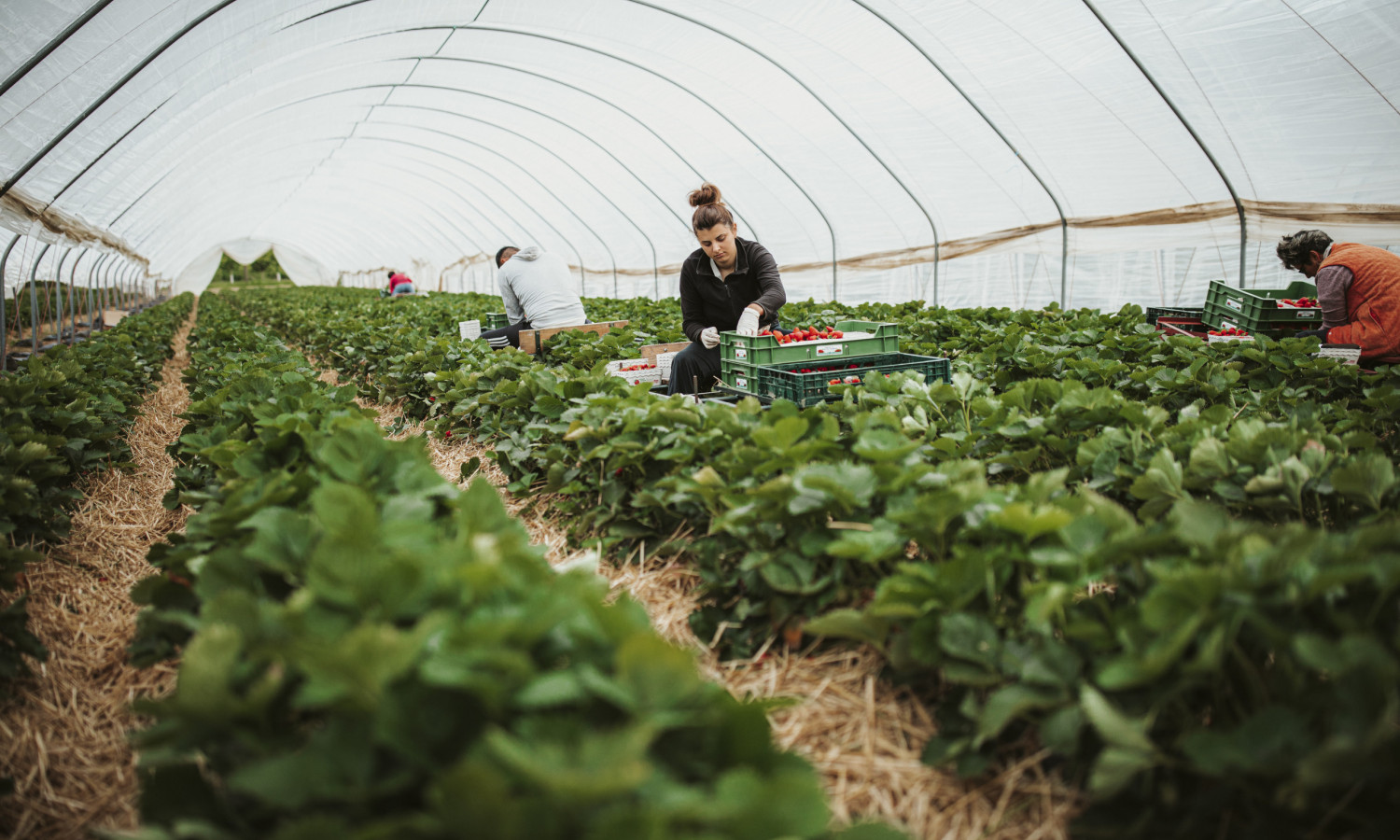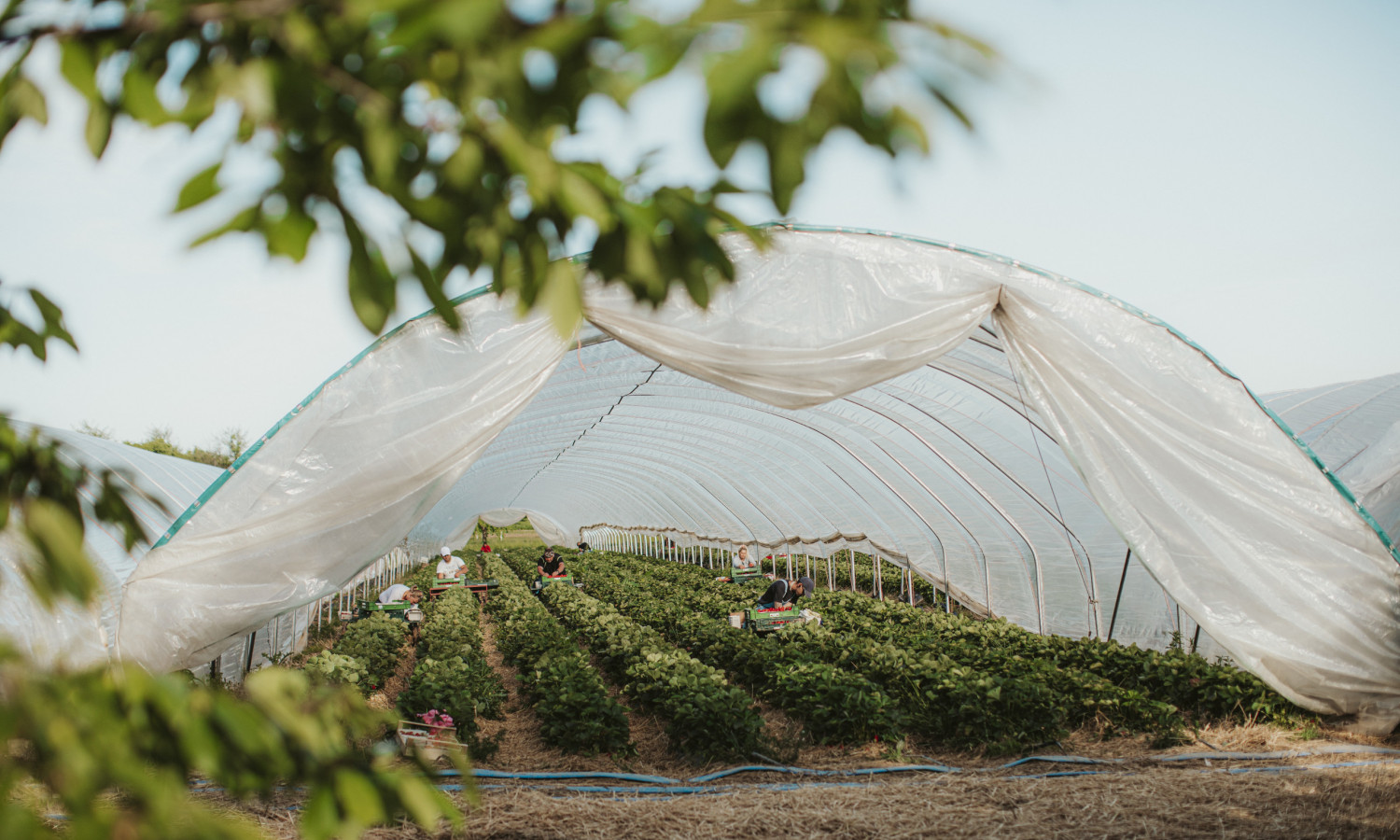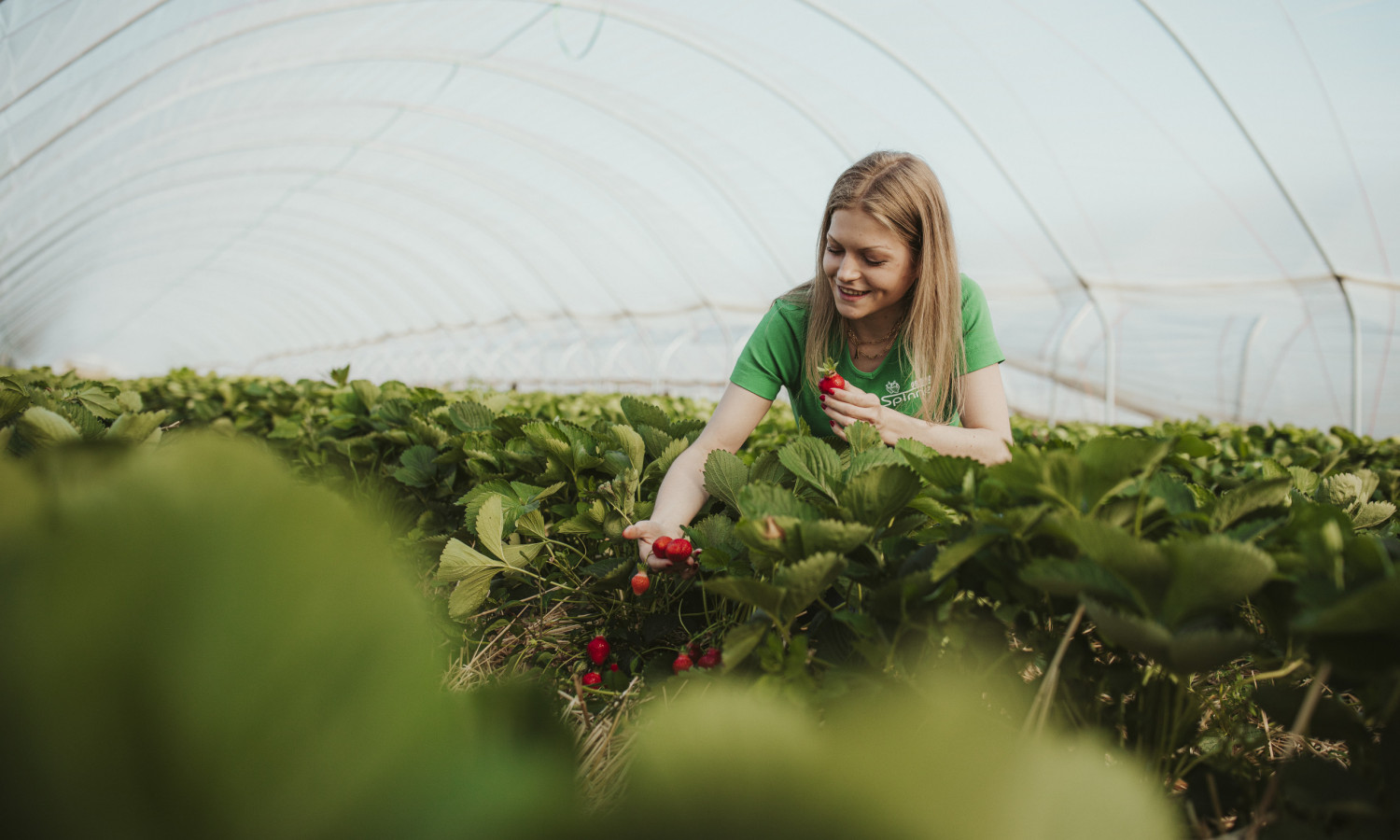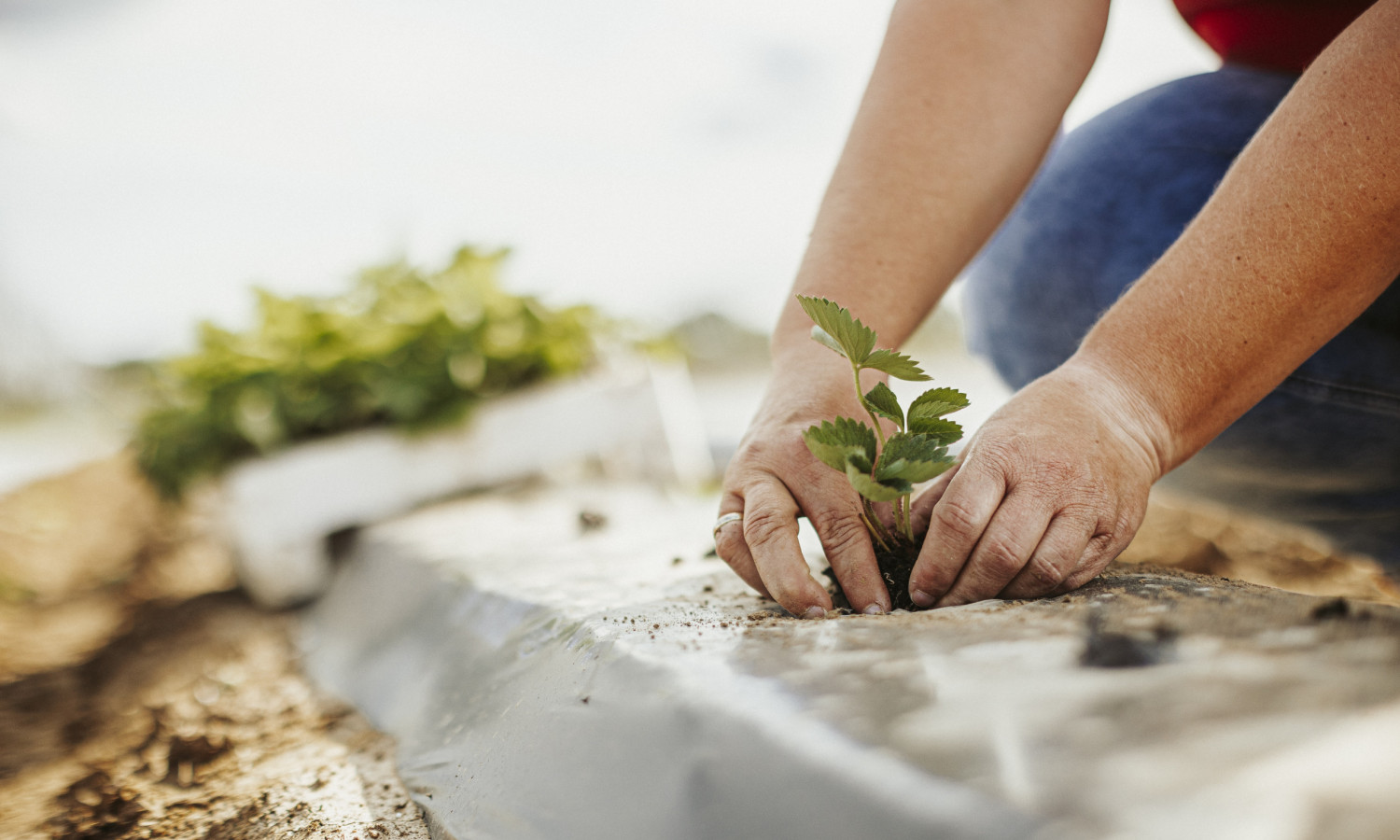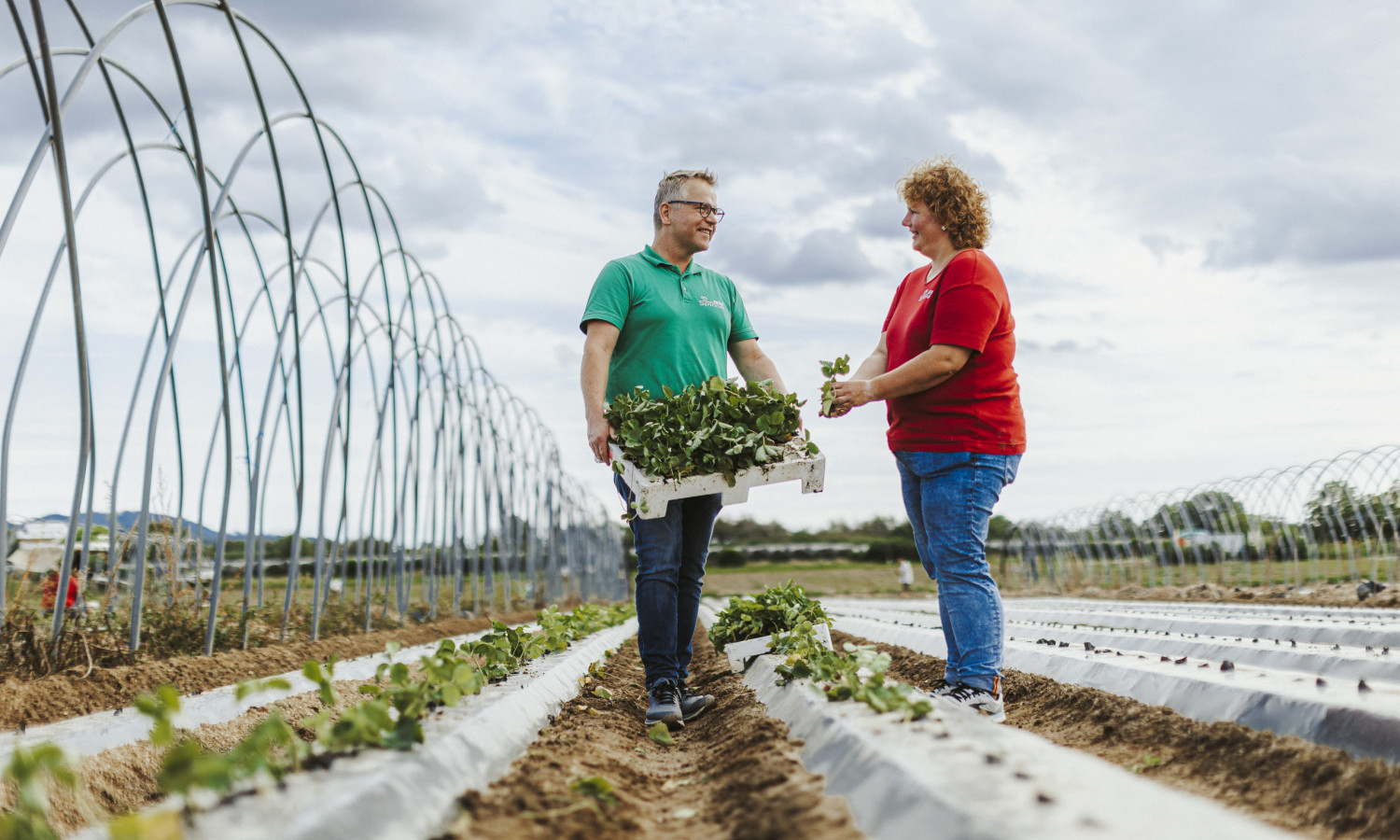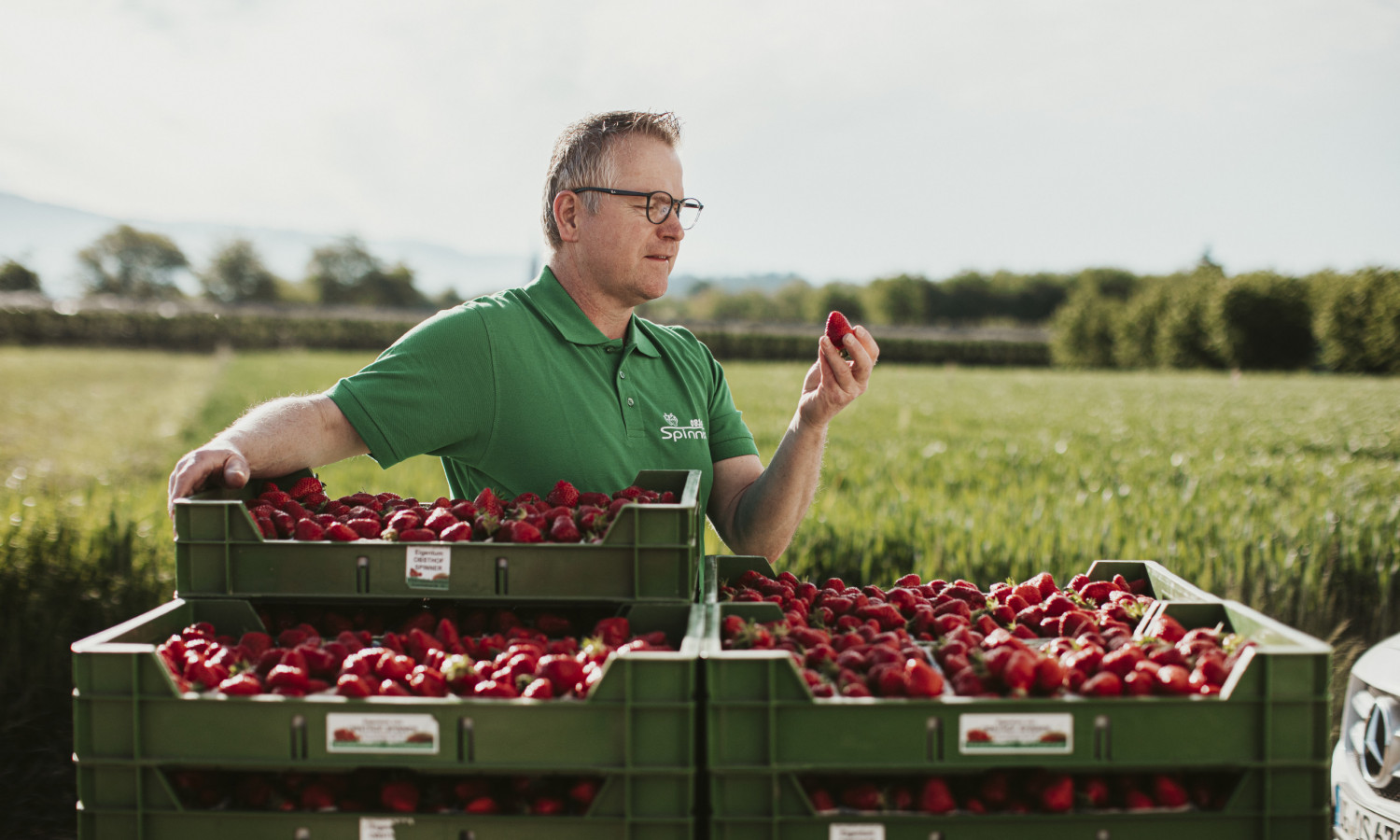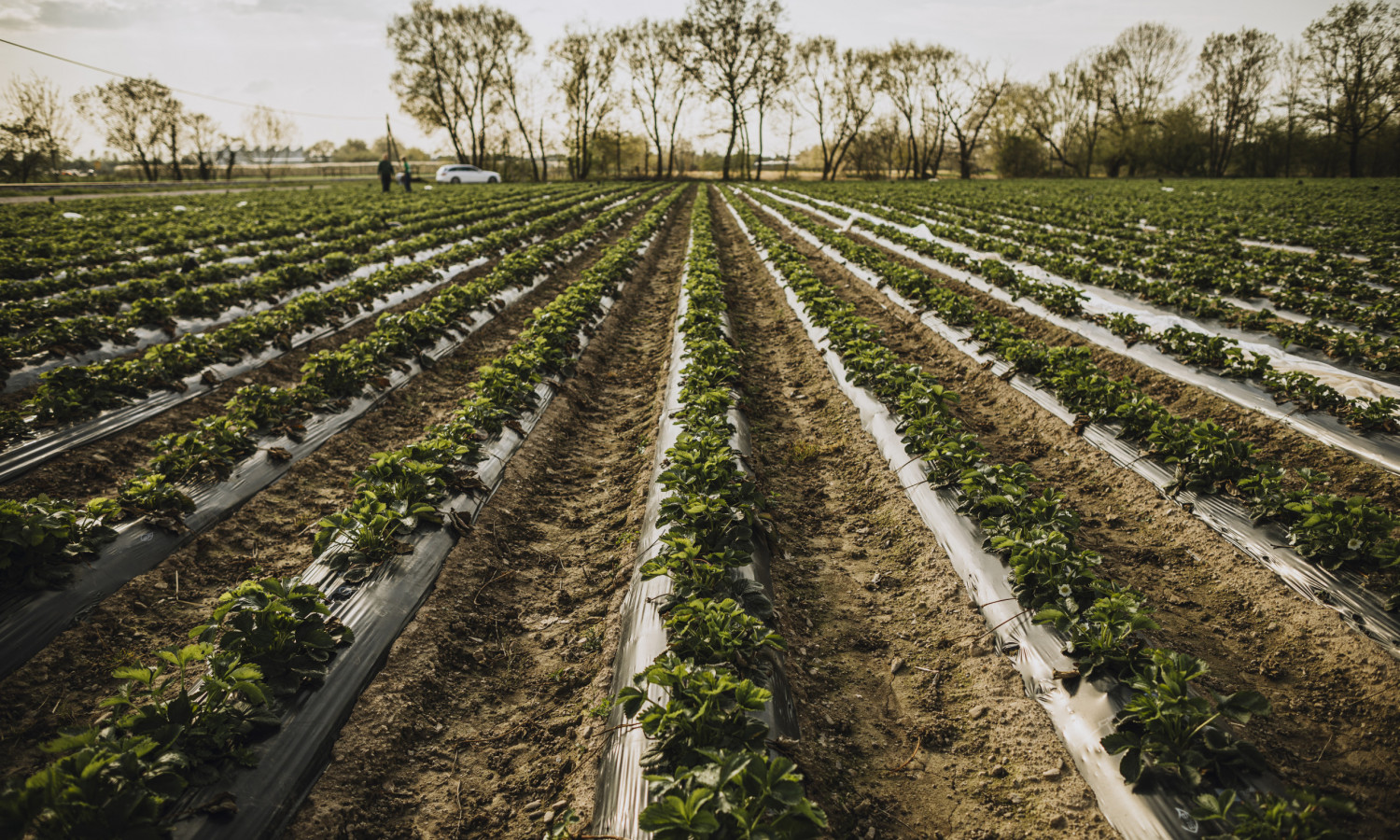- Homepage
-
About us
- Online Shop
- Sales booths
-
Blog & Recipes
- Jobs
- Harvest calendar
- Contact & Directions
- Newsletter subscription
Strawberry cultivation
The cultivation planning
Strawberry is a demanding plant, it loves good soil and a lot of care. In the case of strawberries, we change the fields every 1 to 3 years, in the meantime, various types of green manure are cultivated in the fields, mostly flowering mixtures. These have different functions:
First and foremost, the plant cover ensures that the soil is shaded, thereby activating soil organisms. In addition, the vegetation protects against erosion and nutrient leaching. Incorporating the leaf and root mass provides the soil with organic matter, so it also stimulates soil life as soil organisms convert the biomass into humus. Strong root formation ensures that the soil is loosened, even in deeper layers. This naturally and sustainably improves the water and oxygen supply. The roots absorb nutrients and thus also prevent leaching into the groundwater. Control of special pests, for example nematodes, for this purpose marigolds, also student flowers are sown. The roots attract the nematodes and when the pests then suck on the roots, they are killed. To collect the nitrogen from the air and thus keep it ready for the following culture.
It is important for us that we do not always sow the same green manures, but alternate here as well, in order to at least get a greater variety on the field here. After all, each plant has its different merits. In some fields wheat is also grown beforehand, this then provides us with the straw on which we then bed all our strawberries. The wheat harvest is usually also completed by mid-July, so that we can then plant our new strawberries directly afterwards in a weed-free field.
The preparation of the soil
Good soil preparation is the basis for the successful growth of small strawberry plants. For this we still use the traditional technique of plowing, as our ancestors did. The advantage of plowing is that the remaining crop residues are deposited from the topsoil downwards, creating a fine crumbly soil structure in the upper part. It is very important not to destroy the structure of the whole soil, and it always depends on the right timing. To find out the right time, you often have to go to the field and take a close look at the soil and then choose the right time by looking at the weather forecast.
A good soil can be severely damaged in one year by wrong cultivation, whether by choosing unsuitable machinery or the wrong timing. To make up for such mistakes, it takes years again. The soil is our foundation and has been for generations, we must ensure its fertility in the long term.
The planting - culture method
We plant most of the strawberries in late July to mid-August. Here we use bare-root green plants for our normal cultivation, which come from special propagation companies. The advantage is that we can plant this by machine and it is very quick. For our early cultivation on small dams covered with black foil, we prefer potted plants. However, these must all be planted individually by hand, but because of the root ball, these plants then grow more easily.
But all plants have one thing in common, they need a lot of love and care until autumn. The time from growing until mid-October the plant uses to lay its flowering plants for the next year. A well-cultivated plant is therefore the prerequisite for a successful harvest. An own plant propagation is not possible with our main varieties, because these are all licensed varieties, which you are not allowed to propagate or resell yourself. Only our oldest variety Elsanta we are now allowed to propagate license-free, because here the plant variety protection has already expired.
For an early harvest we need to do a few things, here are main points:
Early variety - Clery, Selection of an early site, these are usually lighter soils (sandy or gravelly fields) that warm up quickly in the spring and preferably still in a wind-protected location, Conditions for rapid soil warming we can also achieve small dams covered with black film. Because due to the solar radiation, the earth underneath warms up faster and is also not so moist. Covering plants with early-season films or fleeces at the end of winter to encourage early budbreak. Covering by tunnels, this will create an even larger cushion of warmth in the spring that will allow plants to grow in a much warmer climate, and thus earlier vegetation overall.
Heart blood, our strawberry tunnels
In 2012 we created our first tunnels for the strawberries and why actually? Especially in the years before, we regularly had many failures due to heavy rain and hail during the harvest. Of course, this led to crop failures and, above all, to costs that were no longer calculable. But what is even worse, you have given your best for a whole year and then there is nothing to harvest. Often it's not even worth harvesting the bad fruit because the labor costs are too high compared to the selling price. This then led us to grow at least some of our strawberries in the tunnel.
We have been able to gain many new experiences. A positive surprise for us was the high quality of the fruits we harvest. Due to the weather protection we can always wait until the strawberries are really ripe and we don't have to be afraid of rain or hail anymore, which damage especially the very ripe fruits. These delicious and sweet fruits then also compensate for many things that we did not know before. These include, for example, the fear of snowfall or storms that can destroy our tunnels, as well as the constant work of opening and closing them. This is necessary to be able to start harvesting early, but also to create an optimal climate for the plants and a bad environment for diseases. But just here we have found that this technique can even save pesticides, for example, fungal diseases that we can prevent by regulating the humidity in the tunnel.
Even more interesting for us was the experience of how we can successfully control pests biologically. In order to develop this further, we joined the Nützlingseinsatz Baden e.V. advisory service. Here we are supported by special consultants not only in monitoring pests, but also in controlling beneficial insects. This is particularly important, because it means we can do without pesticide treatment, and if there are not enough beneficial insects, we can buy them and spread them. Of course, it takes a bit of faith to spread bean leaves covered with predatory mites (= beneficial insects that eat the pests = spider mites) individually over each row of strawberries to decimate the pest. For us, however, this is a piece of the future, even if it is a bit more work and spraying may be cheaper. But without plant protection the cultivation of strawberries at reasonable prices is not possible, we want to say that clearly!
Traditional strawberry cultivation
However, we still cultivate most of the fields as before, i.e. without the use of films. In order to harvest strawberries in June, we do not need early planting films, either above or even below the plant. The advantage of this production method is the low cost of cultivation until harvest. Some of these plants we leave for another year to have another harvest, the fruits are often not so big anymore, but they are ideal for making jam. This form of cultivation is also our basis for a late harvest until July, because these plants are already completely covered with straw in February, so that they have a slightly longer hibernation and are then also ready for harvest later. With this form of cultivation, we would also like to create a balance so that we also still have a film-free strawberry cultivation. We would also like to do this as long as there is still a demand for fresh strawberries in June/July. Our goal is always to try new things and keep the old tried and true.
To be able to eat our strawberries directly after picking, they must be clean. For this purpose, we spread straw in all our strawberry fields. Another advantage, which should not be underestimated, is that the fruits are not so susceptible to disease. After harvesting, the straw is then completely incorporated into the soil, thus ensuring active soil life. Did you know that we bring 2 to 3 times the amount of straw to a field that was previously grown on a wheat field? This is perhaps also a reason why our strawberries are doing so well.


